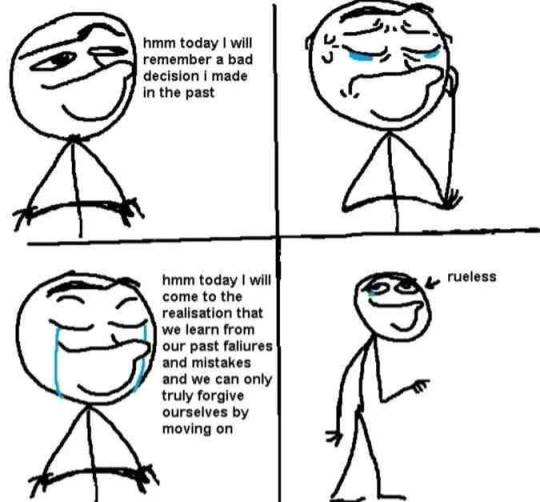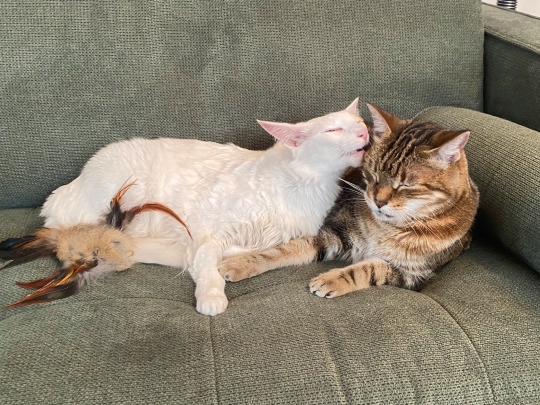Text


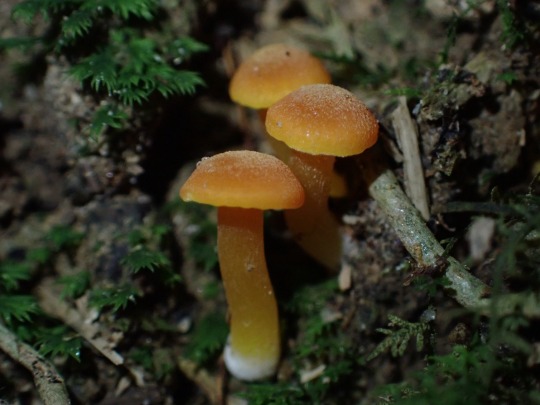



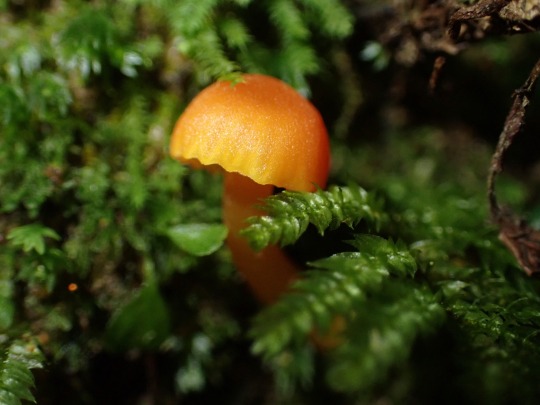



some of the various Hygrocybe spp. waxcaps from our walk yesterday <3
173 notes
·
View notes
Text

Oil flask in the form of a hedgehog, Greek, 6th century BC
from The Metropolitan Museum of Art
585 notes
·
View notes
Text
[The British imperial imaginary conceives] of Bermuda as a tiny paradise in the North Atlantic. But long before cruise ships moored up, prison ships carried hundreds of convicts to the island, first docking in 1824 and remaining there for decades. [...] [T]he use of Bermuda as a prison destination is less well known. For 40 years, British prisoners worked backbreaking days labouring in Bermuda’s dockyards and died in their thousands. [...]
[T]he notorious floating prisons known as hulks. [...] [I]n addition to locations across the Thames Estuary, Portsmouth and Plymouth, the British government used these ships as emergency detention centres in colonial outposts across the 19th century, detaining convicts in Bermuda between 1824 and 1863 and Gibraltar between 1842 and 1875. England has a long history of banishing its criminal population. In the 18th century, criminals were typically sentenced to seven years overseas in America. Many worked as plantation labourers in Maryland and Virginia [...]. Britain [...] turned to hulks to cope with rising [prison housing] numbers. Each could hold between 300 and 500 men, and they were nicknamed “floating hells” for their unsanitary and dangerous conditions.
---
[T]he government felt that convict labour could be put to use in other colonies [in addition to Australia], and so began an experiment in 1824 to send men to Bermuda. [...] Though only 20 miles long, the island was already extremely important to naval strategy. It was used as a refuelling station for British ships travelling to colonial outposts such as Halifax, Nova Scotia and the Caribbean. But the naval dockyard needed modernisation, and rather than employ local workers, convicts - a cheap and easily mobilised workforce - filled the labour gap. [...]
[M]en lived on board the ships they had sailed on (seven in total). [...] Many were injured in the dockyards, others went blind from the reflected glare of the sun as they quarried white limestone. [...] They were burnt by scorching temperatures and suffered sunstroke [...]. Bermuda also received people convicted in other British colonies, including Canada and the Caribbean. During the years of the great famine in Ireland (1845 to 1852), thousands of Irish convicts arrived on the island, many suffering from malnourishment. [...] The experiment ended after 40 years, in 1863, when dockyard repairs were completed. The remaining hulks were scuttled or broken up for scrap, and convicts were transported to Australia and Tasmania, or home to England [...].
---
Bermuda’s history as a prison island has been largely forgotten, but this story shares parallels with today. Prisons are suffering from overcrowding, and governments still detain prisoners and others on islands and modified ships. In Dorset, the Bibby Stockholm ship is housing asylum seekers [...].
The convicts who lived, worked and died in Bermuda are part of a larger global story of coercion and empire.
The product of their labour was imperial strength, but for those sent thousands of miles from home and buried in unmarked graves, the brutalities of their experience should also be remembered.
---
All text above by: Anna McKay. "Britain's forgotten prison island: remembering the thousands of convicts who died working in Bermuda's dockyards". The Conversation. 27 March 2024. [Bold emphasis and some paragraph breaks/contractions added by me. Presented here for commentary, teaching, criticism purposes.]
28 notes
·
View notes
Text


Calabar Python (Calabaria reinhardtii), family Boidae, found in West and central Africa
Though it is referred to as a python, this snake is actually in the Boa family.
photographs by Dick Bartlett
#image of this important in my childhood you prob already know my lifelong love of fossorial erycine boas#was especially a fan of rubber boa and would encounter the occasional one with all black or very dark brown scales#such that they looked very very similar to calabar python so id use a photo of calabar python to point at as reference#and the local wildlife officials would not believe me when i reported to them that id found black boas#both because we were allegedly outside their known range and also they claimed rubber boas couldnt be so colored#so when about fifteen i heard report of boas in strange place bad habitat and rode bike 25 miles out not hyperbole or exaggeration#to look for boa but was desolate fenced off private innaccessible poor habitat even initial rumor was that the boa found in someones garage#thought i failed so stopped riding to take drink water and rest on rural backroad look down#and right there total serendipity was body of run over rubber boa if i hadnt stopped exactly there by chance i wouldnt have seen it#AND it was all black except for the yellow ventral#amazing#placed the body in plastic container road all those miles back to wildlife office and made them look#see boas live here and they can be black can the state museum and land agency please formally corroborate my voucher report#was quite proud had jet lag that day from long return flight and was restless#got off flight slept then woke up and was like today im going to go out and im going to find that snake#oh edited to add that this event had added gravity because about year later#found a unique and very rare population of all black melanistic gartersnakes closer to home and the first time i saw one#it was swimming around in a pool beneath a little two meter waterfall like a pitch black anaconda like something out of legend#i doubted both rumors of boas in that weird place and of supposed black snakes closer to home but both turned up to be true
226 notes
·
View notes
Text
“Impossible” lives and worlds. “Ungrievable” people. Pacific stories. Apocalypse as precedent. Extinction as antecedent. “Nightmare” islands. Controlling time. Imperial futurelessness and Pacific futures. “Who gives a damn?”
—
Pacific texts do not only destabilize inadequate presents. They also transfigure the past by participating in widespread strategies of contesting linear and teleological Western time, whether through Indigenous ontologies of cyclical temporality or postcolonial inhabitations of heterogonous time. To this end Kathy Jetñil-Kijiner’s poetry collection Iep Jaltok mobilizes a layered and accreted temporality, wherein past Pacific injustices, injuries, and indeed formerly impossible futures have not only come to pass but also recur in the present. […] Iep Jaltok does not defer an apocalyptic future. Instead it asserts the possibility, indeed the past guarantee, of Pacific worlds in spite of Western temporal closures. In Iep Jaltok, Jetñil-Kijiner represents Pacific history as a sedimented accumulation that, like Achille Mbembe’s notion of time in the postcolony, “is not a series but an interlocking of presents, pasts, and futures that retain their depths of other presents, pasts, and futures, each age bearing, altering, and maintaining the previous ones”. Such a notion of […] time casts the past as always carried forward into and composing with the present. […] Jetñil-Kijiner situates sea level rise within a longer lineage of impossible futures so that, in Iep Jaltok, extinction becomes part of Pacific history rather than its end. Jetñil-Kijiner’s poetry therefore speaks from the place of an impossible subject, a subject of history whom history was anticipated to wipe out. […]
—
In the context of US settler colonialism, Jessica Hurley has noted “the ongoing power of a white-defined realism to distinguish possible from impossible actions” (778). Discussing the state of exception within which Indigenous tribes exist in the American juridical and political landscape, […] the US exercises “an exclusive uncontestable right to define what will count as a viable legal or political form(ul)ation” (91). In other words, certain aspects of Indigenous life under settler colonialism fall under the purview of what colonizing powers define as the (im)possible. In the Pacific, Euro-American travelers […] have deemed the entirety of Indigenous life impossible for centuries. Pacific scholars have tracked many versions of this impossibility. Some of these discourses invoke the actual physical destruction of islands and the […] death of islanders. Even when they do not, they share in common assumptions of, and thus work to construct the Pacific as, a place and a peoples with no future.
The theory of “fatal impact” (Keown 40) was an early version of the Pacific extinction narrative, based in the actual decimation of islander populations due to the introduction of European diseases in the nineteenth century, Michelle Keown has described the prevalence of “fatal impact” narratives in fin de siècle writing about the Pacific where […] [the] “belief […] gained widespread currency … reinforced by the application of […] theory of natural selection to Indigenous societies.” Writers like Robert Louis Stevenson and Jack London perpetuated such theories and incorporated them into their fiction. And while Pacific populations recovered in the twentieth century, this narrative retained currency in spite of census data to the contrary.
—
Later discourses of Pacific futurelessness focused on the aftermath of Pacific independence movements and targeted Pacific political and economic viability. In this view, the physical smallness and remoteness of Pacific islands from centers of metropolitan capital meant that they were also isolated from the prosperity brought by the global market. Greg Fry, writing of Australian representations of the Pacific in the 1990s, notes that the Pacific was regarded as facing “an approaching ‘doomsday’ or ‘nightmare’ unless Pacific Islanders remake themselves” (25). From the center-periphery model perpetuated by global capital, only a Malthusian “future nightmare of overcrowding, poverty, mass unemployment, serious environmental degradation, and decline in health standards” for Pacific islands seemed possible (26). Unsurprisingly, incorporating Pacific islands into international networks of trade was touted as the appropriate remedy.
Finally, European and American nuclear militarism during the Cold War and after required the Pacific “Basin” (Routes 102) to be represented as an empty space. As numerous scholars have pointed out, the Pacific was chosen for nuclear testing in part because small island populations could be relocated with relative ease and were regarded as “exotic, malleable and, most of all, dispensable” (Teaiwa 20). Bikini Island, where the first of 67 US nuclear tests took place from 1946 to 1958, was chosen largely because of its remoteness from commuter or commercial air and sea routes; nuclear, economic, and demographic priorities thus rendered islanders’ lives “ungrievable” (Butler xiv) and the atolls into a space of inconsequential violence.
—
The latter sentiment was perhaps most famously demonstrated in Henry Kissinger’s dismissal of the Pacific: “There are only 90,000 people out there. Who gives a damn?” (qtd. in Teaiwa 25). Nuclear history epitomizes, though it does not have monopoly over, narratives in which the future of non-Pacific places is produced from the excision of the Pacific from a shared future.
Such narratives were supposed to proclaim and herald the end of Pacific futures. Instead, they constitute a lineage or genealogy of surviving the future, by recording past and ongoing violence between Pacific peoples and Western neocolonialism and militarism. Iep Jaltok shares in this project by embedding extinction narratives within the historical time of [the] Pacific […], Beginning with Marshallese founding myths that include the invention of the sail and the birth of Marshallese seafaring, the collection then moves on to chart postwar Marshallese experience. […] “History Project” opens […] as the speaker, an unnamed Marshallese girl loosely based on Jetñil-Kijiner herself, declares: “time to learn my own history” (20). […] [,] offering a lineage of futures that were never supposed to come to pass […].
Apocalypse as precedent overturns the very world-ending convention of the genre. By turning extinction into antecedent, the ending of the future becomes itself a kind of Pacific worlding, and […] aspires toward an unknown future not tied to an apocalyptic ending.
—
Text above by: Rebecca Oh. “Making Time: Pacific Futures in Kiribati’s Migration with Dignity, Kathy Jetñil-Kijiner’s Iep Jaltok, and Keri Hulme’s Stonefish.” MFS Modern Fiction Studies. Winter 2020. [Italicized first paragraph/heading in this post added by me. Bold emphasis and some paragraph breaks/contractions added by me. Presented here for commentary, teaching, criticism purposes.]
280 notes
·
View notes
Text
count dooku after indulging in his daily milano cookie
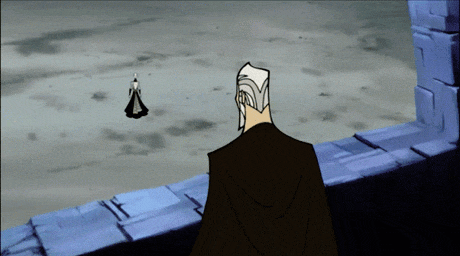
15K notes
·
View notes
Text
[T]hey frequently transgress the spatial boundaries imposed by humans to organize and govern spaces […]. [W]etlands spread out and do not conform to the straight and consistent lines between land and water. […] The smells of wetlands, of decomposing vegetation, of sulphur, were […] off-putting for [British] settlers in Aotearoa […]. Soon after the British-led military invasion of the Waikato region in 1863 and the confiscation of 480 000 ha of Maori lands, [...] [t]he ‘great swamp region of the Waikato’ was described as a picture of ‘desolation’ and ‘stagnant water’ where the ‘ground quaked and quivered beneath’ one's feet, and opened up unexpectedly to suck people down into ‘horrible depths of [the] black, stinking bog’. […] The omnipresent dangers of ‘damp vapour arising’ were deemed ‘highly prejudicial to residents’ health throughout Aotearoa. […] The ‘tepid swamps’, it was reported, poisoned the ‘otherwise pure air’ […].’ The Napier Swamp Nuisance Act enabled local government officials to ‘fill in’ (meaning to drain, establish levees, and build up the soil) any parcel of land deemed a muddy watery odorous ‘nuisance’ without the consent of the landowners. […] [P]oliticians suggested [that Aotearoa] be decontaminated through strategic interventions to remove and remake wetlands […]. Such ideas, which fused medical and socio-economic theories, justified indigenous dispossession and drainage works […].
Text by: Meg Parsons and Karen Fisher. “Historical smellscapes in Aotearoa New Zealand: Intersections between colonial knowledges of smell, race, and wetlands.” Journal of Historical Geography Volume 74, pages 28-43. October 2021.
---
On 24 December 1928 Italy’s fascist regime launched […] a fourteen-year national land reclamation programme aimed at [...] Italy's ‘death inducing’ swamps […]. The Pontine Marshes, a marshland spreading across 75,000 hectares south of Rome was given top priority […]. [T]he fascist regime used an extensive propaganda machinery to promote the programme […] as a heroic quest for producing an 'ideal' [...] landscape [...]. Newsreels documented step by step the struggle […], with Mussolini himself often featuring, overseeing the project, or even working the land. […] Nearly 3,000 newsreels and many documentaries were produced [...]. This was [...] [among] Italy's most important public works project[s] [...], a transformative enterprise that [...] would engage with an "untamed" natural environment and [force] it into a sanitised version of ideal fascist nature. [...] [The marshes] were linked to the idea of wilderness, [...] undisciplined, uncivilised, and unproductive [...]. This policy […] aimed […] [at] removing “unhealthy” [...] areas, through the process of sventramento (disembowelment). […] The construction of New Towns [...] in the Pontine Marshes [...] aimed at producing the 'ideal' settlement [...]. [These newly constructed] municipal buildings often boasted prominent towers [....] reigning supreme over the Marshes [...].
Text by: Federico Caprotti and Maria Kaika. “Producing the ideal fascist landscape: nature, materiality and the cinematic representation of land reclamation in the Pontine Marshes.” Social & Cultural Geography Volume 9. 2008.
---
[I]n Recife in the Northeast of Brazil [...] the transformation of the city was predicated on [...] [a] notion of whiteness that required the enclosure of wet, amphibious space to make dry land. [...] Racialised groups – of black, indigenous, and mixed heritages – and the houses, marshlands, and mangroves where they lived, were subject to eradication [...]. [F]rom the 1920s to 1950s, during the rise to hegemony in Brazil of [a form of eugenicist, modernist nationalism,] [...] [the] idea's heartland [was] the Northeast. [...] Recife is also a centre of Brazilian black culture [...]. One of the key sites in Brazil's slave and sugar trades [...], the city was [...] [a] hub. Many of these people lived in what came to be called mocambos, a word that designated an informal dwelling, but came to mean much more. [...]. Mocambos were seen as [...] the place where exploited labour was kept out of sight. [...] They were also [...] the inheritance [...] of the quilombo - the community of escaped slaves. [...] In July 1939, the proto-fascist administration [...] of Agamenon Magalhães, put in place by Getúlio Vargas' repressive Estado Novo, launched the Liga Social Contra o Mocambo (Social League Against the Mocambo, LSCM). The League emerged out of a tellingly named “Crusade” against the mocambos. [...] Mocambos were characterised as repellent, unhygienic, and dangerous: “the mocambo which repels. The mocambo which is the tomb of a race … a sombre landscape of human misery … which mutilates human energy and annuls work" [...]. These were the decades of the embranquecimento of the Brazilian population through public policies of immigration, miscegenation, and sterilisation [...]. This white supremacist ideology was inseparably a politics of nature. Magalhães wrote [in 1939]: The idle life, the life that the income of the mocambos provides [...]. It is a life of stagnant water. … [that] generates in its breast the venom of larvae, which are the enemies of life. Enemies of life, as are the mocambos and the sub-soil of cities, where the polluted waters contaminate pure waters [...]. Attempts to “cleanse” the city functioned through a distinct process: aterramento, the making of land. [...] Or as 1990s mangue beat [mangrove beat] musicians [...] put it, “the fastest way also to obstruct and evacuate the soul of a city like Recife is to kill its rivers and fill up its estuaries” [...].
Text by: Archie Davies. "The racial division of nature: Making land in Recife". Transactions of the Institute of British Geographers Volume 46, Issue 2, pp. 270-283. First published 29 November 2020.
64 notes
·
View notes
Photo

Butter pastry shop, Teresa Boulevard, Budapest, 1969. From the Budapest Municipal Photography Company archive.
155 notes
·
View notes



